Hyundai Bayon vs Kia XCeed – Which one offers the better deal?
Everyday use, family trips or long-distance drives – here’s where the differences show.
Discover whether Hyundai Bayon or Kia XCeed fits your lifestyle better.
Costs and Efficiency:
Looking at overall running costs, both models reveal some interesting differences in everyday economy.
Hyundai Bayon has a a bit advantage in terms of price – it starts at 20100 £, while the Kia XCeed costs 23100 £. That’s a price difference of around 3077 £.
Fuel consumption also shows a difference: Hyundai Bayon manages with 5.40 L and is therefore a bit more efficient than the Kia XCeed with 6.40 L. The difference is about 1 L per 100 km.
Engine and Performance:
Power, torque and acceleration are the classic benchmarks for car enthusiasts – and here, some clear differences start to show.
When it comes to engine power, the Kia XCeed has a convincingly edge – offering 180 HP compared to 100 HP. That’s roughly 80 HP more horsepower.
In acceleration from 0 to 100 km/h, the Kia XCeed is evident quicker – completing the sprint in 8.50 s, while the Hyundai Bayon takes 11.30 s. That’s about 2.80 s faster.
In terms of top speed, the Kia XCeed performs somewhat better – reaching 210 km/h, while the Hyundai Bayon tops out at 179 km/h. The difference is around 31 km/h.
There’s also a difference in torque: Kia XCeed pulls clearly perceptible stronger with 265 Nm compared to 200 Nm. That’s about 65 Nm difference.
Space and Everyday Use:
Beyond pure performance, interior space and usability matter most in daily life. This is where you see which car is more practical and versatile.
Both vehicles offer seating for 5 people.
In curb weight, Hyundai Bayon is a bit lighter – 1170 kg compared to 1351 kg. The difference is around 181 kg.
In terms of boot space, the Kia XCeed offers minimal more room – 426 L compared to 411 L. That’s a difference of about 15 L.
In maximum load capacity, the Kia XCeed performs to a small extent better – up to 1378 L, which is about 173 L more than the Hyundai Bayon.
When it comes to payload, Kia XCeed hardly perceptible takes the win – 479 kg compared to 465 kg. That’s a difference of about 14 kg.
Who wins the race?
The Kia XCeed proves to be wins the duel decisively and therefore becomes our DriveDuel Champion!
Kia XCeed is the better all-rounder in this comparison.
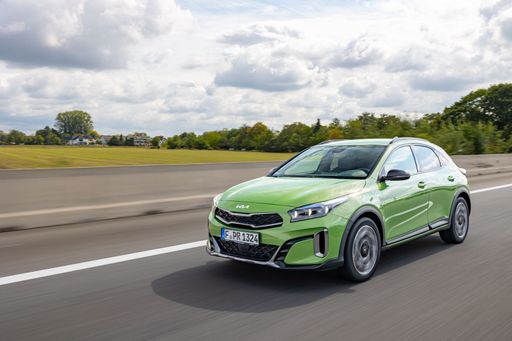 @ Kia Corporation
@ Kia Corporation
Kia XCeed
Hyundai Bayon
The Hyundai Bayon is a compact crossover that effortlessly merges practicality with modern design. Its sleek exterior and spacious interior make it an ideal choice for urban settings and longer journeys alike. With a focus on comfort and connectivity, this vehicle provides a smooth driving experience paired with advanced technology features.
details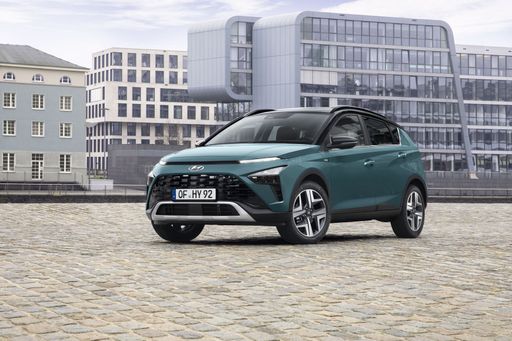 @ Hyundai Motor Company
@ Hyundai Motor Company
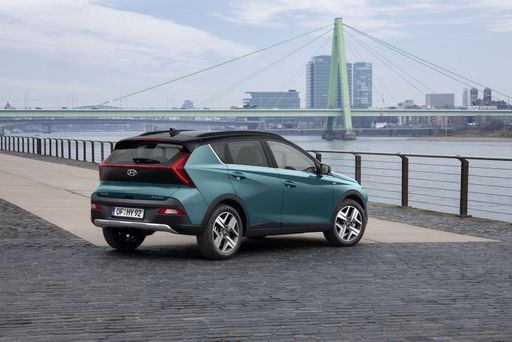 @ Hyundai Motor Company
@ Hyundai Motor Company
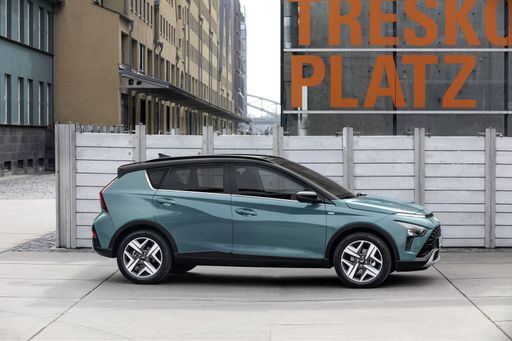 @ Hyundai Motor Company
@ Hyundai Motor Company
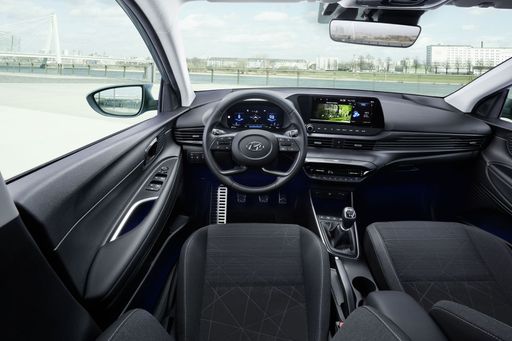 @ Hyundai Motor Company
@ Hyundai Motor Company
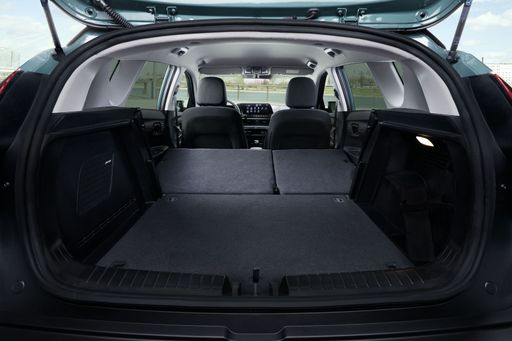 @ Hyundai Motor Company
@ Hyundai Motor Company
Kia XCeed
The Kia XCeed offers a stylish and modern design, blending the sportiness of a coupé with the practicality of an SUV. Its interior is well-crafted, featuring high-quality materials and a range of advanced technology to enhance the driving experience. With an emphasis on comfort and efficiency, the XCeed provides a compelling option for those seeking a versatile and dynamic vehicle.
details @ Kia Corporation
@ Kia Corporation
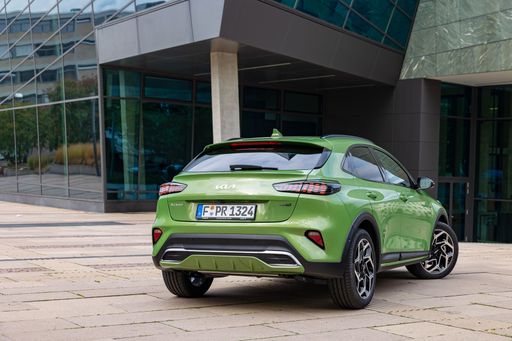 @ Kia Corporation
@ Kia Corporation
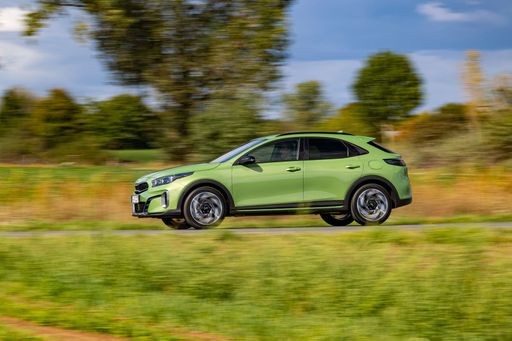 @ Kia Corporation
@ Kia Corporation
 @ Kia Corporation
@ Kia Corporation
 @ Hyundai Motor Company
@ Hyundai Motor Company
|
 @ Kia Corporation
@ Kia Corporation
|
|
|
|
Costs and Consumption |
|
|---|---|
|
Price
20100 - 25800 £
|
Price
23100 - 33000 £
|
|
Consumption L/100km
5.4 - 5.5 L
|
Consumption L/100km
6.4 - 6.8 L
|
|
Consumption kWh/100km
-
|
Consumption kWh/100km
-
|
|
Electric Range
-
|
Electric Range
-
|
|
Battery Capacity
-
|
Battery Capacity
-
|
|
co2
124 g/km
|
co2
144 - 155 g/km
|
|
Fuel tank capacity
40 L
|
Fuel tank capacity
50 L
|
Dimensions and Body |
|
|---|---|
|
Body Type
SUV
|
Body Type
SUV
|
|
Seats
5
|
Seats
5
|
|
Doors
5
|
Doors
5
|
|
Curb weight
1170 - 1195 kg
|
Curb weight
1351 - 1419 kg
|
|
Trunk capacity
411 L
|
Trunk capacity
426 L
|
|
Length
4180 mm
|
Length
4395 mm
|
|
Width
1775 mm
|
Width
1826 mm
|
|
Height
1500 mm
|
Height
1483 - 1495 mm
|
|
Max trunk capacity
1205 L
|
Max trunk capacity
1378 L
|
|
Payload
460 - 465 kg
|
Payload
471 - 479 kg
|
Engine and Performance |
|
|---|---|
|
Engine Type
Petrol
|
Engine Type
Petrol
|
|
Transmission
Manuel, Automatic
|
Transmission
Manuel, Automatic
|
|
Transmission Detail
Manual Gearbox, Dual-Clutch Automatic
|
Transmission Detail
Manual Gearbox, Dual-Clutch Automatic
|
|
Drive Type
Front-Wheel Drive
|
Drive Type
Front-Wheel Drive
|
|
Power HP
100 HP
|
Power HP
115 - 180 HP
|
|
Acceleration 0-100km/h
11.3 - 12.4 s
|
Acceleration 0-100km/h
8.5 - 11.7 s
|
|
Max Speed
176 - 179 km/h
|
Max Speed
182 - 210 km/h
|
|
Torque
172 - 200 Nm
|
Torque
200 - 265 Nm
|
|
Number of Cylinders
3
|
Number of Cylinders
3 - 4
|
|
Power kW
74 kW
|
Power kW
85 - 132 kW
|
|
Engine capacity
998 cm3
|
Engine capacity
998 - 1598 cm3
|
General |
|
|---|---|
|
Model Year
2024
|
Model Year
2025
|
|
CO2 Efficiency Class
D
|
CO2 Efficiency Class
E
|
|
Brand
Hyundai
|
Brand
Kia
|
What drivetrain options does the Hyundai Bayon have?
The Hyundai Bayon is available as Front-Wheel Drive.
The prices and data displayed are estimates based on German list prices and may vary by country. This information is not legally binding.
